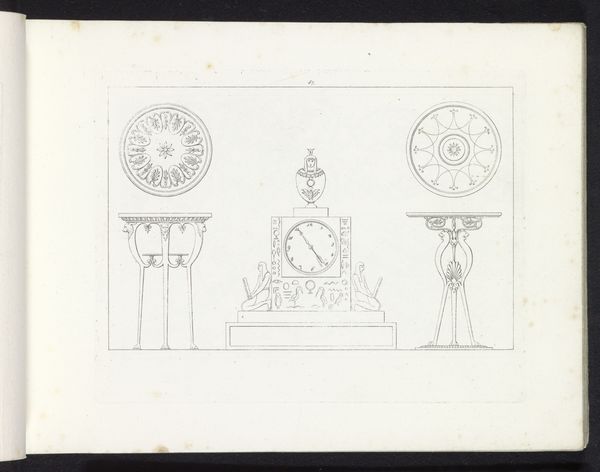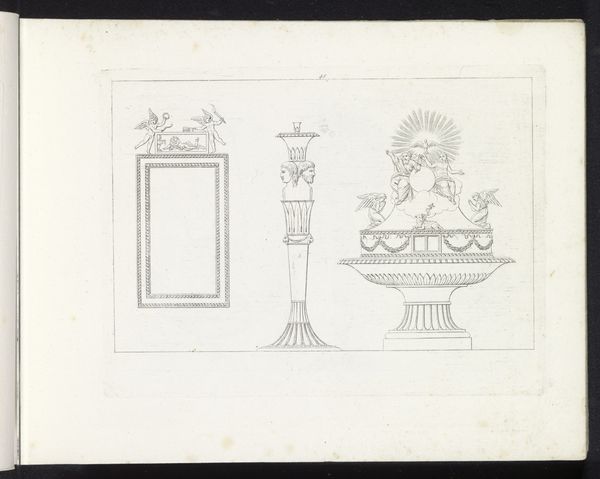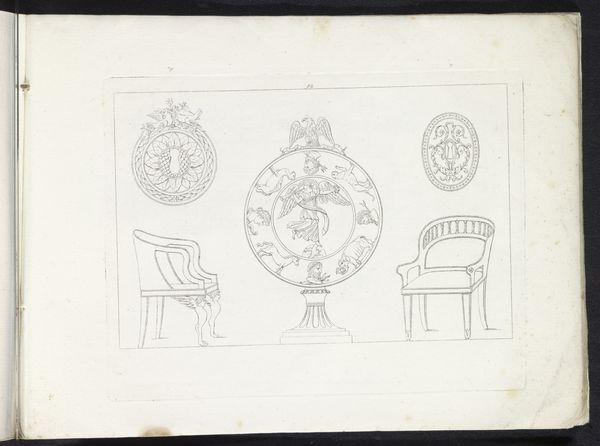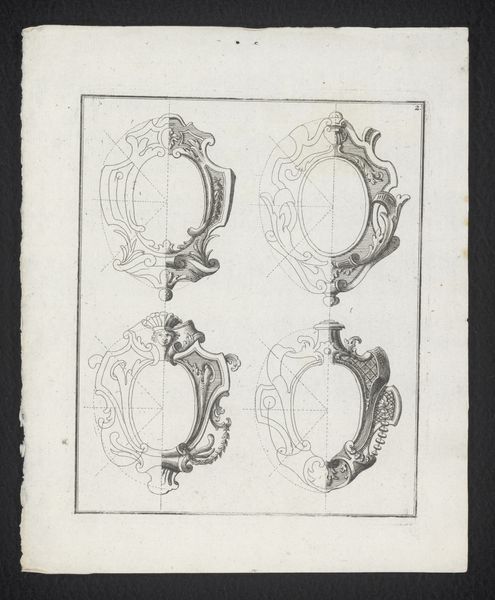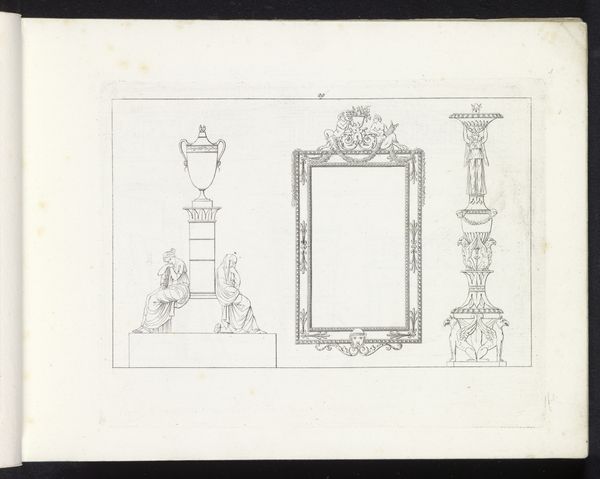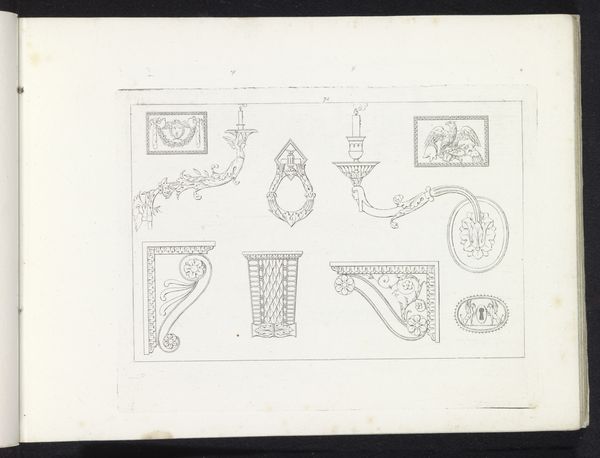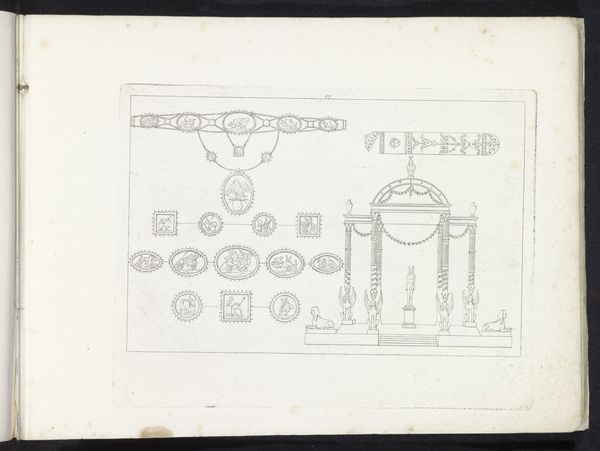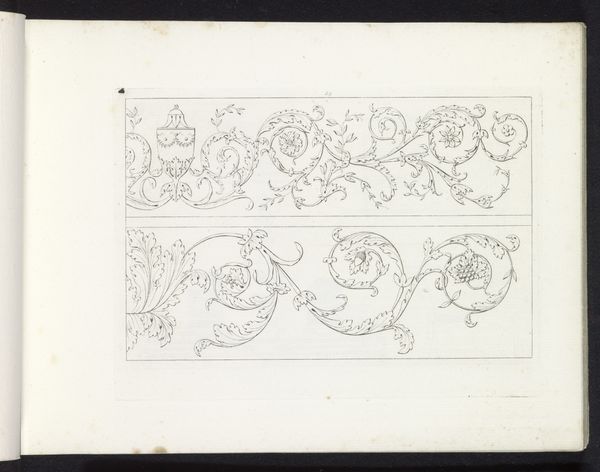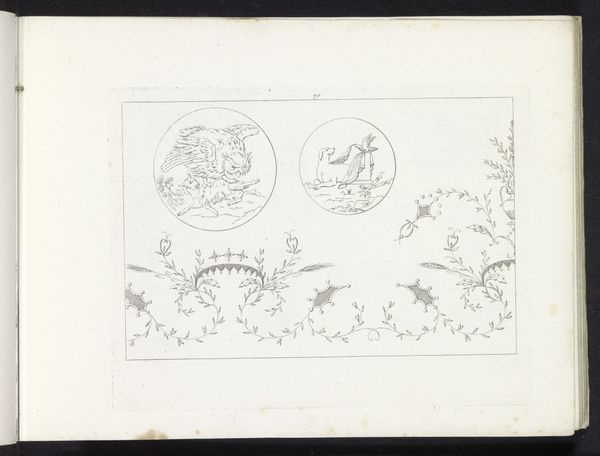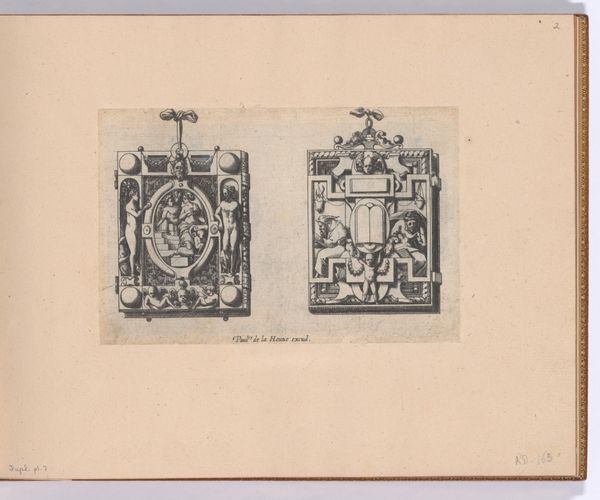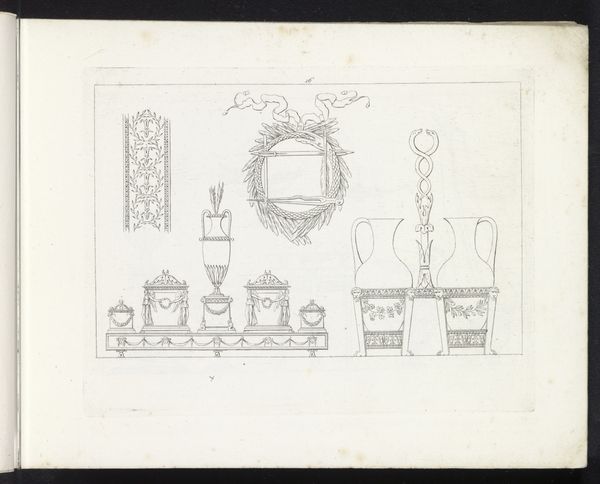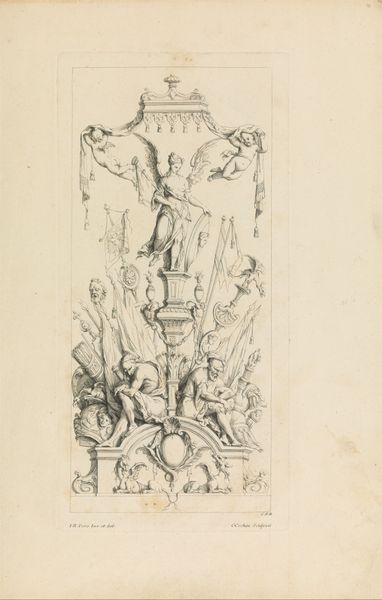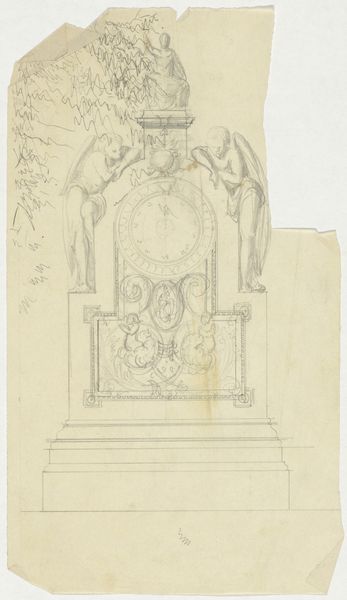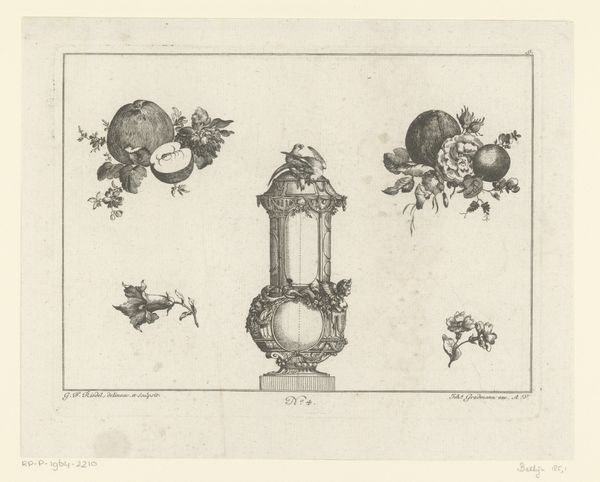
drawing, pencil
#
drawing
#
neoclacissism
#
allegory
#
pencil
#
history-painting
Dimensions: height 161 mm, width 215 mm
Copyright: Rijks Museum: Open Domain
Pietro Ruga made this drawing of two ornamental table clocks, but we don’t know when. The classical figures that adorn them, however, invite us to consider the period in which this design was conceived and its cultural meanings. Notice the antique figures surrounding each clock: winged angels, classical goddesses, and gods. Clocks like this were a common sight in wealthy European households from the 18th century onwards. But these aren’t just functional objects. They are a display of social and cultural capital. The figures borrow from the visual lexicon of antiquity, signalling the owner’s erudition and good taste. Clocks like these marked time, but they also marked social status. To properly understand the cultural and institutional context, we need to analyze household inventories, consider the classical revival, and explore the designs used in clock-making at the time. Such research can help us to more fully understand the social life of art.
Comments
No comments
Be the first to comment and join the conversation on the ultimate creative platform.
